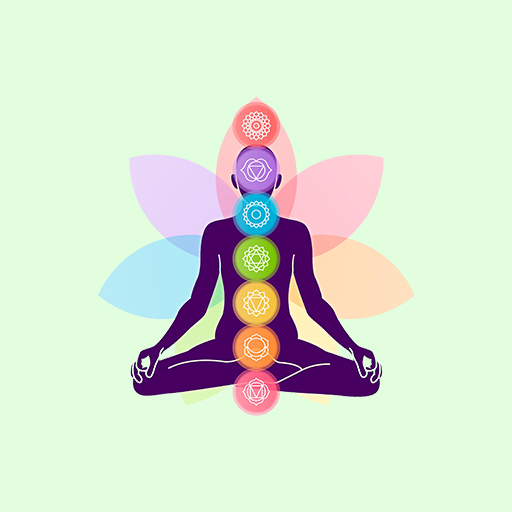Chakra Healing

The term Chakra first emerged in the Vedas, though not as a psychic energy center but as King Chakravartin who 'turns the wheel of his empire' in all directions from the center, representing his power. Chakras are wheel-like energy centers in the body that correspond to physio-emotional functions. They're said to affect our emotional and physical well-being. They are not physically discernible but belong to the subtle spiritual body and connect it to the material plane. Chakra based energy resonates with the integrative New Age disciplines. Seen in the light of psychology, Chakras are associated with color therapy, Maslow’s hierarchy, childhood developmental theories and more.
The 7 main Chakras are situated along the spine from the sacrum at the bottom up to the crown at the top of the head. Each of the 7 key Chakras has a specific function that corresponds with particular aspects of our human experience.
The Root Chakra or Muladhara in Sanskrit, is located at the base of the spine. It governs the way we connect to the outside world and oversees stability, food and shelter. It is associated with the color red and the Earth element.
The Sacral Chakra or Svadhisthana in Sanskrit, is located below the navel. This Chakra is intimately linked to our sexuality and creative process. Its energy encourages us to explore the world and use our creativity to find artistic outlets and adapt to change. Its base color is orange and its element is Water.
The Solar Plexus Chakra or Manipura in Sanskrit, means City of Jewels. This Chakra is located between the rib cage and the navel. It is the source of self-esteem that translates our desires into action. Physically, it helps regulate digestion. Its color is yellow and it is associated with the Fire element.
The Heart Chakra or Anahata in Sanskrit, lies at the middle of the cardiovascular system and is connected to the heart and lungs. The heart Chakra is associated with a person’s emotional profile, such as their natural generosity and ability to appreciate compassion. Its color is green and its element is Air.
The Throat Chakra or Vishuddha in Sanskrit, governs the neck, mouth, tongue and other physical elements of the throat area. It regulates how we communicate and allows us to express ourselves skillfully. Confidence and understanding are related to this Chakra. Its color is blue and its element is Ether.
The Third Eye Chakra or Ajna in Sanskrit, is located behind the forehead, at the level of the space between the eyebrows. The 'third eye' Chakra governs intuition and insight, especially at spiritual levels. A receptive and balanced Ajna Chakra empowers us to notice interconnections that exist in this world and beyond. Its color is indigo and its element is Light.
The Crown Chakra or Sahasrara in Sanskrit, is situated at the top of the head. Also known as the 'thousand petal lotus' Chakra, it is considered to be the most spiritual of the core Chakras as it governs spiritual consciousness and the potential for awakening to the dimension of the divine. Its color is purple (or white) and it embodies the Spirit.
All sorts of practices fall under the Chakra meditation umbrella. Some are devoted to spiritual awakening; others to healing or relaxation.
Vedic Psychology Experts





